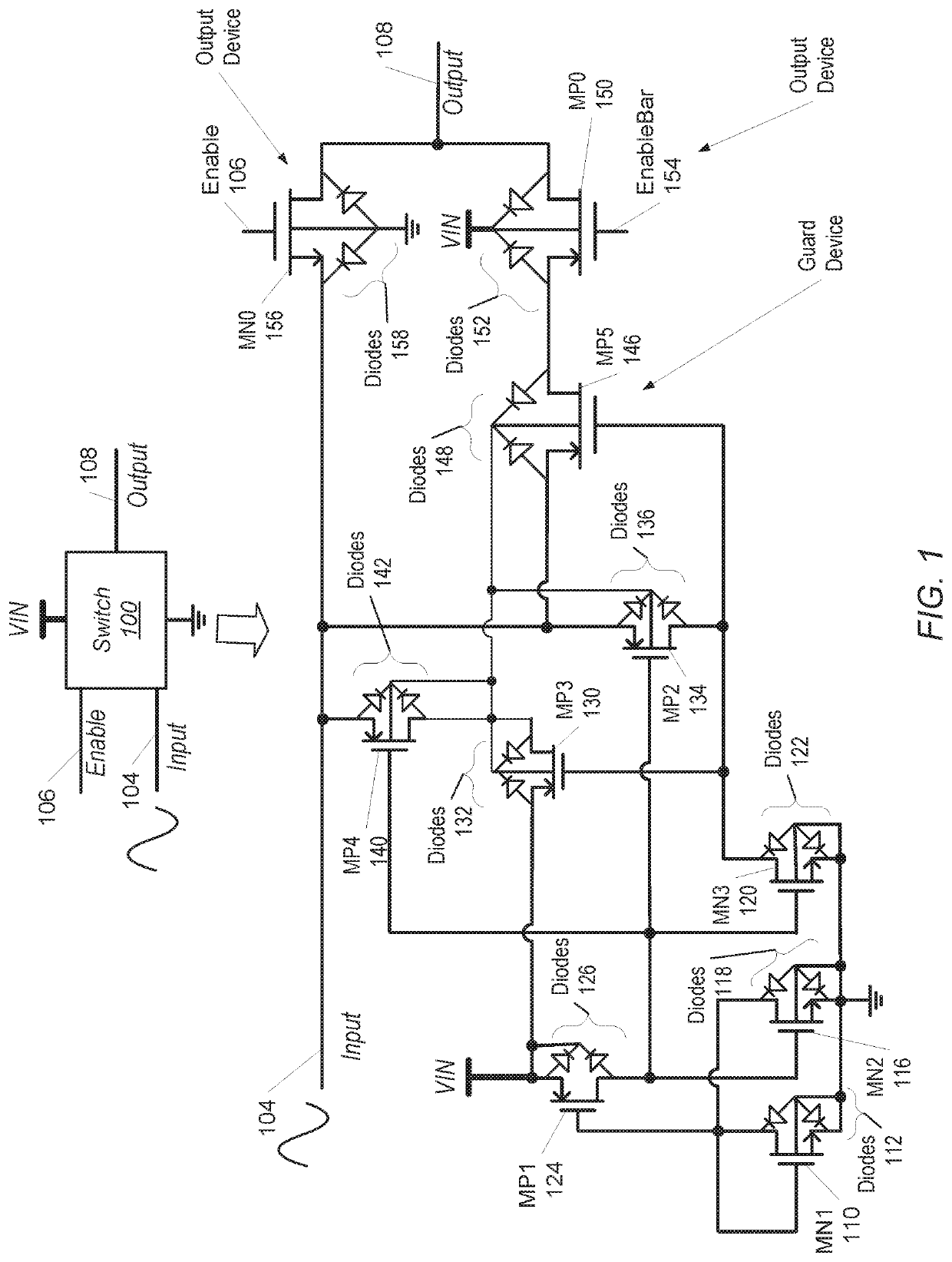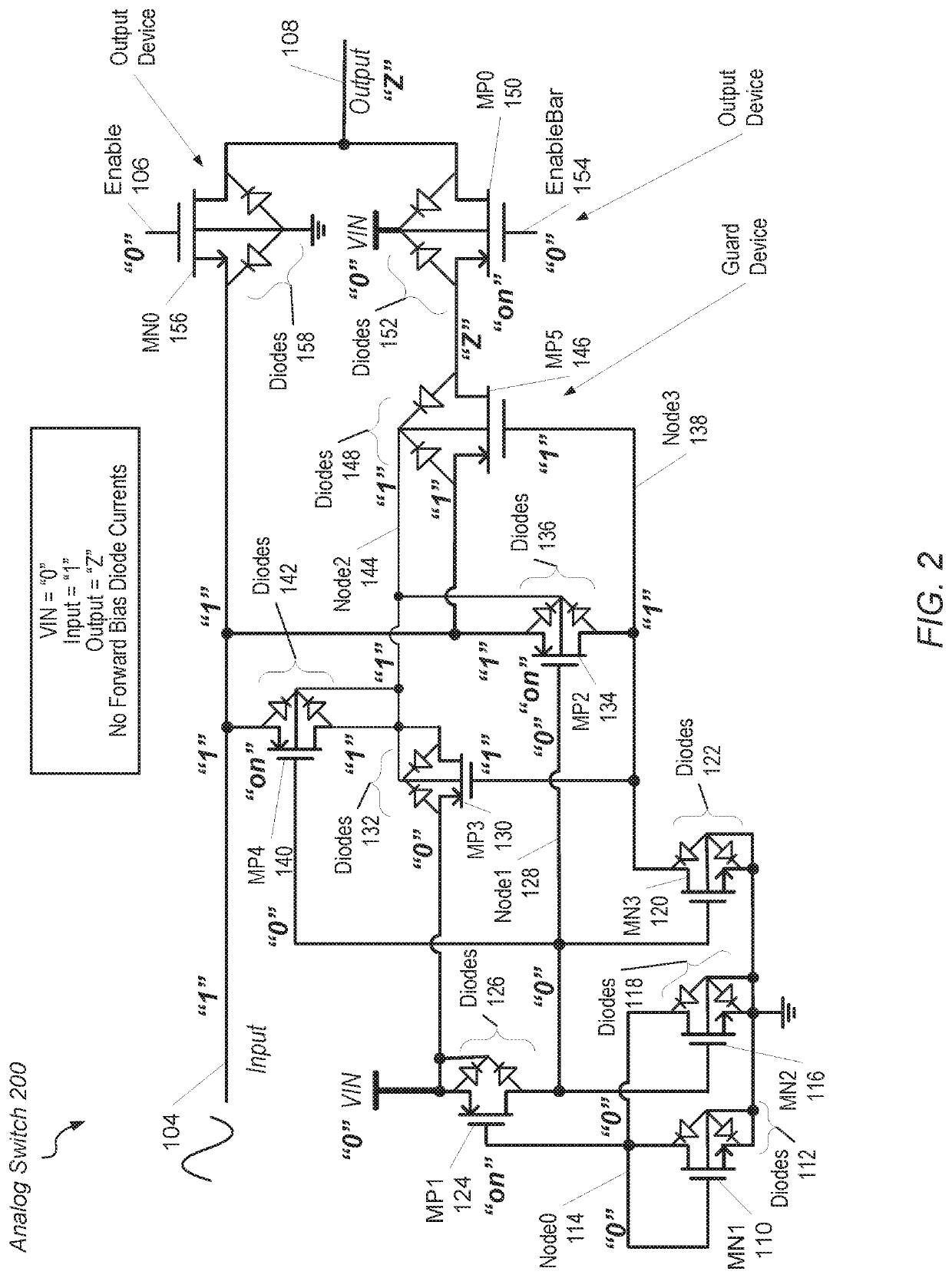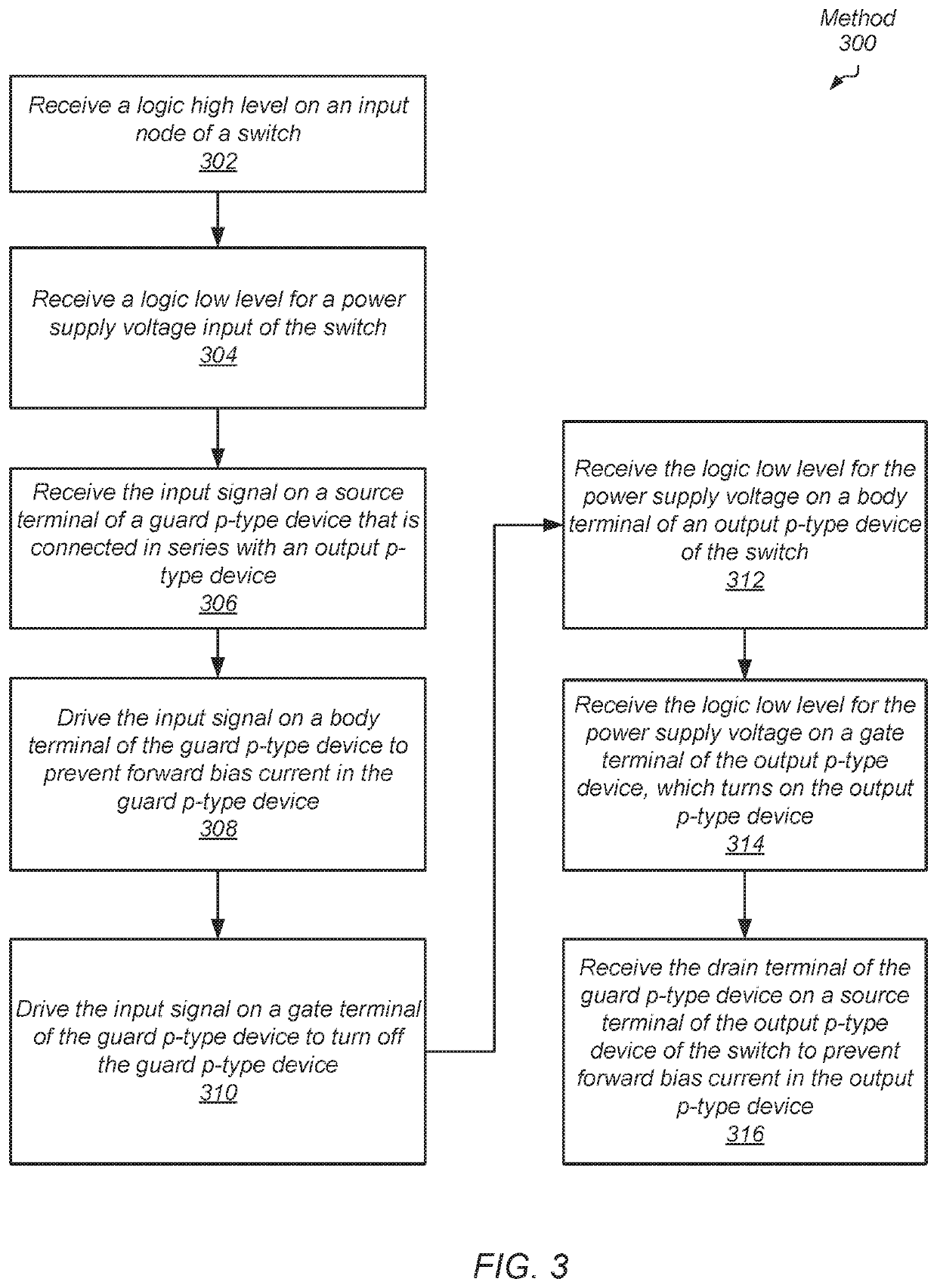Analog switches immune to power sequence
a technology of analog switches and power sequences, applied in the field of computing systems, can solve the problems of unsatisfactory current flows through the parasitic diode, increase power consumption, forward bias currents increase power consumption, etc., and achieve the effect of preventing forward biasing of the parasitic diod
- Summary
- Abstract
- Description
- Claims
- Application Information
AI Technical Summary
Benefits of technology
Problems solved by technology
Method used
Image
Examples
Embodiment Construction
[0025]In the following description, numerous specific details are set forth to provide a thorough understanding of the embodiments described in this disclosure. However, one having ordinary skill in the art should recognize that the embodiments might be practiced without these specific details. In some instances, well-known circuits, structures, and techniques have not been shown in detail for ease of illustration and to avoid obscuring the description of the embodiments.
[0026]Turning now to FIG. 1, a block diagram illustrating one embodiment of an analog switch 100 is shown. In various embodiments, the analog switch 100 receives an analog input signal 104, and when enabled, conveys the received input signal 104 as the output signal 108 as an analog signal. The analog switch 100 also receives a power supply voltage (or power supply signal) designated as “VIN” as well as a ground reference voltage level. The power supply voltage VIN is also referred to as the power supply signal VIN ...
PUM
 Login to View More
Login to View More Abstract
Description
Claims
Application Information
 Login to View More
Login to View More - R&D
- Intellectual Property
- Life Sciences
- Materials
- Tech Scout
- Unparalleled Data Quality
- Higher Quality Content
- 60% Fewer Hallucinations
Browse by: Latest US Patents, China's latest patents, Technical Efficacy Thesaurus, Application Domain, Technology Topic, Popular Technical Reports.
© 2025 PatSnap. All rights reserved.Legal|Privacy policy|Modern Slavery Act Transparency Statement|Sitemap|About US| Contact US: help@patsnap.com



